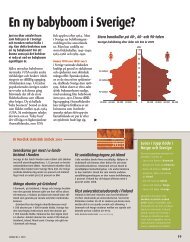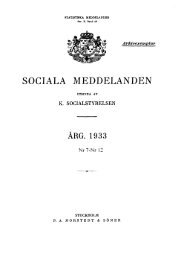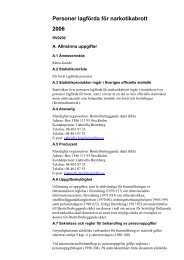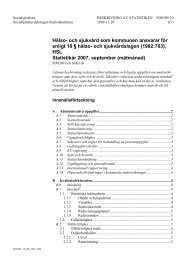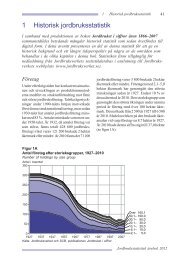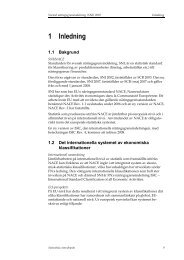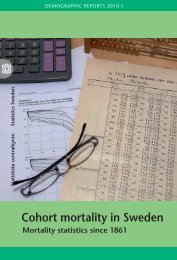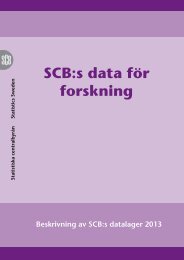Kvalitetsbegrepp och riktlinjer för kvalitets - Statistiska centralbyrån
Kvalitetsbegrepp och riktlinjer för kvalitets - Statistiska centralbyrån
Kvalitetsbegrepp och riktlinjer för kvalitets - Statistiska centralbyrån
Create successful ePaper yourself
Turn your PDF publications into a flip-book with our unique Google optimized e-Paper software.
Comments on accuracy measures<br />
In planning and decision contexts statistics are often, at least in a first round, used so that<br />
reasoning is carried out under the premise that the statistics provide correct values.<br />
However, many users are aware that they may come to more or less misleading<br />
conclusions by disregarding the uncertainty. Those who want to judge the consequences<br />
of uncertainty are in markedly different situations if uncertainty measures are presented<br />
or not. With accuracy measures available, users who are knowledgeable in statistics can<br />
make well - founded judgements of the possible consequences of the uncertainty, and<br />
thereby make appropriate adjustments to their preliminary conclusions.<br />
Accuracy measures are of relevance not least for estimates of change.<br />
3 TIMELINESS of the statistics<br />
concerns the relation of statistics to the current state of<br />
affairs<br />
Users normally want statistics that describe the "now" situation, timely statistics.<br />
The time between "now" and the reference time plays the central role. It depends on<br />
production time, publication frequency and punctuality.<br />
Comment on timeliness<br />
Another important aspect when judging timeliness of statistics is how fast reality<br />
changes. When judging whether statistics are sufficiently up - to - date, the user combines<br />
the "age" of the statistics with his/her own views on the pace of change in the real world<br />
phenomenon under consideration.<br />
3.1 Frequency<br />
Statistics from recurrent surveys are usually produced according to a regular timetable<br />
(monthly, quarterly, annually, etc.). It is then natural to speak of frequency (or<br />
periodicity).<br />
- Survey frequency is the periodicity of reference times.<br />
- Data collection frequency is the periodicity of the producer's data collection.<br />
- Dissemination frequency is the periodicity with which statistics are published.<br />
Usually the three frequencies agree, but they may differ. Users normally care most<br />
about reference time and dissemination frequencies.<br />
Example<br />
The SCB Investment survey illustrates that the frequencies mentioned<br />
above may differ. This survey collects primary data and publishes statis-<br />
tics three times a year, while quarters are reference periods.<br />
3.2 Production time<br />
Production time concerns the time lag between reference time (reference time point<br />
or end of reference period) and publication time.<br />
3.3 Punctuality<br />
Punctuality concerns the agreement between promised and factual dissemination<br />
times.<br />
Comments on frequency, production time and punctuality<br />
Statistics users are commonly anxious that statistics should be available at the "right<br />
time" (e.g. to a prescribed date for decision taking). For a one - time survey the crucial<br />
component is the production time. For recurrent surveys publication frequency and<br />
punctuality are also important.<br />
For economical statistics which affect financial markets, requirements on punctuality and<br />
simultaneity can be as high as fractions of a second.<br />
39




